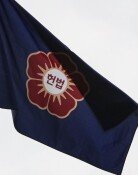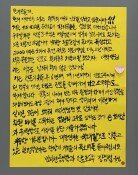Malnourishment of N.Korean soldiers
A comparison of South and North Korean soldiers on the inter-Korean border was conducted under the Kim Dae-jung and Roh Moo-hyun administrations of South Korea, which tours to Mount Kumgang in the North was allowed. Unlike the tall and squarely built South Korean soldiers, their North Korean counterparts were small. They had sharp eyes but their bodies were thin and small. In a documentary aired on The Dong-A Ilbo`s cable station Channel A, North Korean soccer players under age 15 seemed 10 to 20 centimeters shorter than their South Korean counterparts at Kunming Stadium in China in 2009.
Pyongyang last month lowered the minimum for recruiting soldiers from 145 centimeters to 142 centimeters (159 centimeters in South Korea). The average height of a South Korean fourth grader is 140.2 centimeters. The dynamics of the inter-Korean competition has thus considerably changed. Had North Korean soldiers received proper nourishment like their young leader Kim Jong Un (who is presumed to be 168-172 centimeters tall and weighs 80 kilograms), they would be healthy.
The year 1995 was the start of the "Arduous March," when many North Koreans died of hunger due to mass famine, and 17-year-old North Korean youths who are subject to the draft this year were born. The pool of the North`s human resources has shrunk significantly due to the birth rate falling 30 percent and malnutrition. The Food and Agriculture Organization and the World Food Program said 35 percent of the North Korean population is undernourished, or 8.4 million out of 23.7 million people. In other words, one-third of all North Koreans are malnourished. Nonetheless, Pyongyang is about to launch its Kwangmyongsong-3 rocket, which cost 850 million U.S. dollars, and spend 2 billion dollars to celebrate the centennial birthday of the country`s founder Kim Il Sung. Pyongyang could buy 4.75 million tons of rice with the money, enough to feed its people for one year, yet decides to spend lavishly on a fireworks display.
In Myanmar`s by-election Sunday, democratic activist Aung San Suu Kyi won a seat in parliament. Her party, the National League for Democracy, claimed a landslide victory. Though the ruling junta retains power and the ruling Union Solidarity and Development Party has a parliamentary majority, one cannot claim that the spring of Myanmar has come. What is certain is, however, that this was a meaningful step toward democracy. Myanmar President Thein Sein, a former reformist military general who was inaugurated in March, has taken a series of democratic measures such as setting political prisoners free and peace negotiations with minority rebels. This has prompted the U.S. to show willingness to improve relations with the country. Western countries and International organizations such as the World Bank are competing to provide economic assistance and investment.
Myanmar was once a rich nation with abundant natural resources such as oil, natural gas and timber but after the military seized power in 1962, it trod a closed socialist path that resulted in the country`s ruin. Myanmar, which reignited democracy and livelihood through small steps toward democratization, reform, and openness, can hopefully teach a good lesson to North Korea.
Headline News
- Med professors announce intention to leave hospitals starting Thursday
- Bridge honoring Sgt. Moon Jae-sik unveiled in Pennsylvania
- Chief of Staff Chung tells presidential secretaries to stay away from politics
- US FTC bans noncompete agreements
- N. Korea launches cyberattacks on S. Korea's defense companies







